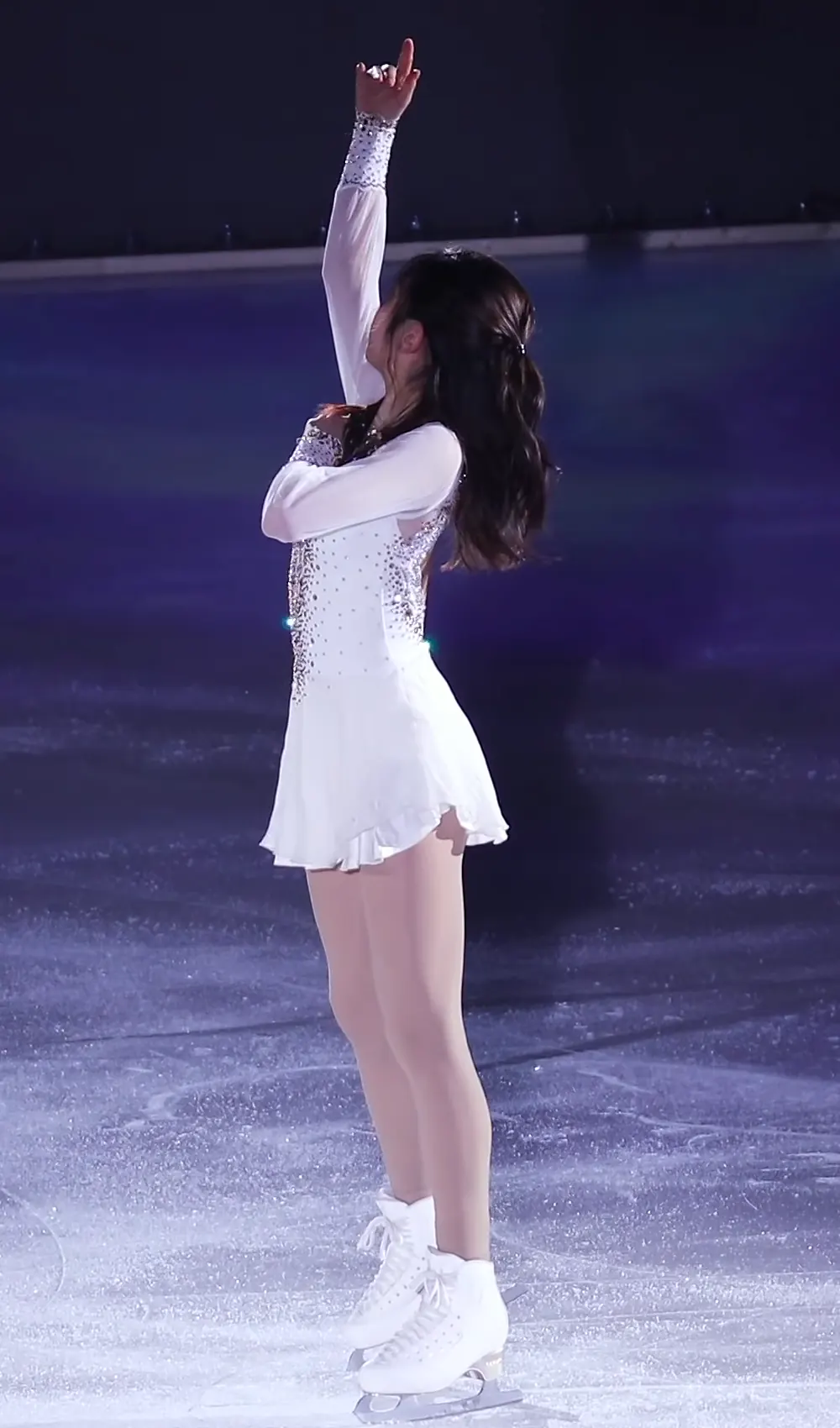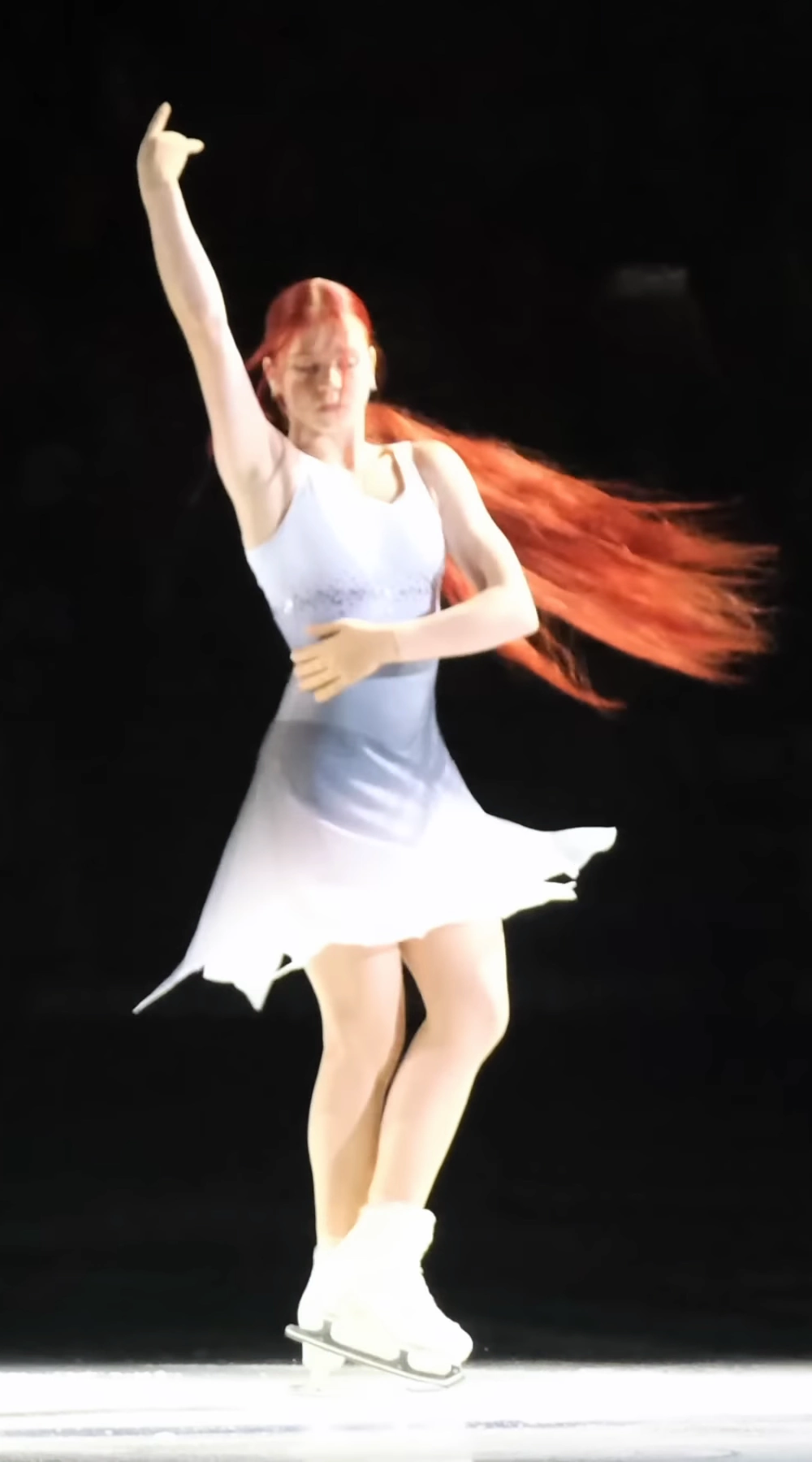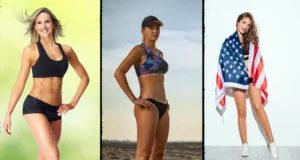The sight of female figure skaters performing gravity-defying jumps and elegant spins while wearing short, sparkly skirts has become synonymous with the sport. However, many wonder why skirts, rather than pants or other attire, have become the de facto costume for women in figure skating competitions. The answer lies in a combination of tradition, functionality, aesthetics, and cultural expectations.
For decades, people have seen skirts as inherently feminine and representing traditional femininity ideals. This view shaped early trends in figure skating costumes, establishing the norm of skirts for women that younger skaters have followed.
While some choose pants for flexibility, most opt for skirts that allow more effortless movement while enhancing the performance’s visual lines and grace. Within these broad guidelines, individual skaters select costumes based on what best suits their image, choreographies, and personal preferences.
Why do female figure skaters wear skirts?
Long-standing tradition
Tradition is a major reason female figure skaters wear skirts instead of pants for competitions. Wearing skirts or dresses has long been considered feminine and appropriate for female figure skating costumes. This is a longstanding tradition in the sport.
For many decades, skirts have generally been viewed as women’s clothing, while pants have been considered men’s clothing. This traditional gender association of certain garments has shaped costume trends in figure skating since its early days.
Costumes for female skaters have historically featured skirts and dresses in line with broader notions of appropriate femininity.
This custom of skirt-like costumes for female figure skaters has persisted from one generation to the next. Younger skaters have continued the tradition established by those before them, making skirts a normalized and standard element of women’s figure skating costumes.
Wearing skirts has become an iconic image symbolizing female figure skating for audiences and judges.
Even as ideals of gender and femininity have gradually evolved in society, the tradition of skirt costumes for female skaters remains firmly entrenched in figure skating.
Many skaters, judges, and viewers still consider skirts to represent a “proper” costume choice for women that aligns with their feminine image on the ice.
Tradition is the main reason for the ubiquity of skirt costumes among female figure skaters. Wearing skirts or dresses has long been associated with idealized notions of appropriate femininity for women’s figure skating. This custom has endured over time through generations of skaters.

Improved functionality
One of the main reasons female figure skaters wear skirts instead of pants during competitions is for better functionality. Skirts allow them to move, spin and jump more easily than pants.
Skirts give figure skaters more range of motion than pants during their performances. The less amount of fabric in a skirt compared to pants lets skaters rotate and twist their bodies easier.
Skaters need the freedom of movement that skirts provide When they do multiple spins and difficult jumps in their programs.
Figure skating routines include many fast turns and rotations that require rapid direction changes. Compared to heavier pants, skirts’ lightweight and flowing nature lets skaters make these quick transitions and turns smoothly.
The less restrictive fit of skirts also means skaters have better mobility in their hips, legs, and ankles during high-speed spins and turns.
The shorter lengths of skirts compared to pants are another advantage. Shorter skirts allow skaters to lift up their legs higher for jumps and spread their legs wider for spins without the constraint of extra fabric at the bottom.
This ease of movement and mobility in spins and jumps enabled by the design of skirts ultimately helps skaters perform complicated elements crucial to their scoring.
The reduced weight, flowing nature, and shorter length of skirts versus pants give figure skaters greater flexibility, mobility, and range of motion to execute complex jumps, rotations, and footwork needed for high-level performances. This functionality is a major reason skirts remain a common choice for female skaters’ costumes.
Enhanced aesthetics
Aesthetics is another important reason why female figure skaters typically wear skirt-like costumes instead of pants during competitions. Skirts are considered to be more visually pleasing and enhance the artistic appeal of figure skating performances in a few ways.
First, the flowing lines of skirts highlight a skater’s physique and the edges of their body movements better than pants would. As skaters rotate and jump, the skirt swirls and moves with them, drawing the audience’s focus on the skater’s form and posture.
Skirts accentuate the edges and curves of a skater’s body, showcasing their athleticism and technique in a more aesthetically balanced way.
Second, the classic design of skirts adds an element of grace and beauty to figure skating that complements the artistic ambitions of the sport. Figure skating involves athletic skill and creative expression through elements like musical interpretation, theme portrayal, and costume design.
The flowing shapes and lines of skirts suit this artistic vision of figure skating more than pants do.
Finally, the shorter lengths of skirts highlight the intricate footwork that forms a key component of figure skating routines. Short skirts allow the skater’s feet and lower body movements to be more visible to judges and viewers, adding to the visual appeal of the performance. The lifted hemlines also accentuate the spins and fast turns performed by skaters.
The fluid lines, graceful flow, and enhanced visibility provided by skirt-like costumes make them more visually appealing than figure skating pants. These aesthetic factors contribute significantly to figure skating performances and help highlight the artistry that defines the sport.
Temperature regulation
Despite wearing seemingly short skirts, female figure skaters do not actually experience excessive cold while performing on ice rinks through a few factors.
To begin with, skaters wear special base layers under their costumes to minimize the cold. They put on base layer tights, leggings, and bodysuits made of fabrics like spandex and lycra that trap heat close to the body. These undergarments worn underneath the skirt insulate skaters from the chilled air.
Next, ice rinks are kept at temperatures that are controlled for optimal performance conditions during competitions. While the ice remains cold, rinks are not generally as frigid as one might think based on observing the ice. The air temperatures are adjusted to favor skaters rather than spectators.
Additionally, the intense physical exertion of figure skating routines generates heat within skaters’ bodies as they perform. All the jumps, spins, and difficult moves cause skaters to warm up considerably as they complete their programs. This exercise heat offsets some initially cold feelings from skating on ice in a skirt.
Lastly, modern skirt fabrics for figure skating costumes are designed to be thin yet insulating. The materials are lightweight and breathable but still block out cooler air.
Advancements in technical performance textiles mean that skirts today can provide adequate warmth despite their abbreviated lengths.
Female figure skaters can minimize cold exposure even when wearing short skirts during ice competitions. This is achieved through factors like base layers, controlled rink temperatures, the heat generated from skating itself, and specialized performance fabrics.

Choreographic suitability
The choreography of some figure skating programs also favors skirts over pants for female skaters. Certain types of music and movement themes are better suited to skirts versus pants.
Some figure skating routines call for more feminine and graceful movements complementing skirt costumes. Programs with themes like romantic melodies, ballerina inspirations, and fairytale stories will often feature delicate, flowing motions that match the visual flow of skirts.
Such choreography tends to incorporate fluid arm gestures, long successions of spins, and choreographic sequences with a more free-flowing aesthetic. When performed in skirts, these movements serve to accentuate the artistic interpretation of this type of choreography compared to pants.
Additionally, some programs may require poses and gestures that would show to advantage better while wearing skirts. Certain arm and body positions taken during choreographic elements frequently expose the upper legs and hips.
Short skirts highlight these movements and postures visually, helping to connect them with the thematic and musical interpretation of the routines. Pants would cover up many of the body lines and positions integral to the choreography in these cases.
The flowy movements and poses demanded by some figure skating programs match better stylistically with skirt costumes versus pants. The fluid choreographic lines created by long, spinning movements and delicate arm positions suit the unrestricted flow of skirts and the visual image they present. The complementary pairing of certain types of choreography and skirt-based costumes thus drives female skaters’ costume choices for some performances.
Personal preference
Even though most female figure skaters wear skirts during competitions, some skaters choose to wear pants or unitards based on personal style and the needs of their programs. This shows that costume choice ultimately comes down to individual preference within broad guidelines.
While skirts are the norm in figure skating, there are no strict requirements that all female skaters must wear skirts. Costume regulations focus more on modesty, dignity, and suitability for the sport rather than mandating specific skirt lengths or styles.
This allows female skaters some flexibility in selecting costumes based on what best matches their unique image and performance goals.
For some skaters, pants or unitards align better with their personal image and brand. These alternative costumes help them project a distinct style and differentiate their performance from others who wear traditional skirt costumes. The ability to forge one’s own signature look through costume choices is thus important for these skaters.
In addition, the technical elements and choreography of some skaters’ programs may work better with pants or unitards than skirts. Certain spins, turns, and arm movements may be advantageous when performed in trousers versus skirts.
Overall, skaters aim to select costumes that optimize rather than hinder the execution of their programs.
Regardless of the broader cultural norms favoring skirts, figure skating still grants individual skaters the freedom to select costumes based on what best matches their desired self-presentation and performance needs. Personal style and program design thus remain important drivers of costume choice for many female skaters, even as the majority still choose skirts for competitions.

Summary
Female figure skaters wear skirts instead of pants for a variety of reasons. Firstly, it is a long-standing tradition rooted in gender norms and ideals of femininity. Skirts provide better functionality, allowing skaters to move, spin, and jump more easily. They offer an improved range of motion, lightweight fabric for quick transitions, and the ability to lift legs higher.
Skirts are also considered more visually pleasing, accentuating the skater’s physique and showcasing graceful lines and movements. Despite the short length, skaters wear base layers and perform in controlled rink temperatures to mitigate the cold. Skirts are choreographically suitable for specific programs that require feminine and flowy movements.
Lastly, personal preference plays a role, as some skaters opt for pants or unitards to reflect their individual style and program design. While tradition and functionality remain influential, skaters can choose their costumes based on aesthetics, choreography, and personal choice.
FAQ
What is the history behind the tradition of wearing skirts in figure skating?
The tradition of wearing skirts in figure skating has a history that dates back to the early 20th century. Women initially wore skirts to maintain modesty, aligning with societal expectations of not showing their legs. Skaters have always incorporated skirts into their attire, evolving from ankle-length skirts in the 1920s to shorter skirts by 1956, popularized by skater Sonja Henie.
Can female figure skaters wear shorts in competitions?
Yes, male figure skaters have costume requirements like all figure skaters. According to the International Skating Union (ISU), which is the governing body for figure skating, competitors’ clothing must be modest, dignified, and appropriate for athletic competition. Costumes must be of athletic cut and may not be strapless, backless, or transparent.
Do female figure skaters wear pantyhose?
Some female figure skaters wear pantyhose or tights while performing, but it is not a requirement according to the regulations set by the International Skating Union (ISU).



